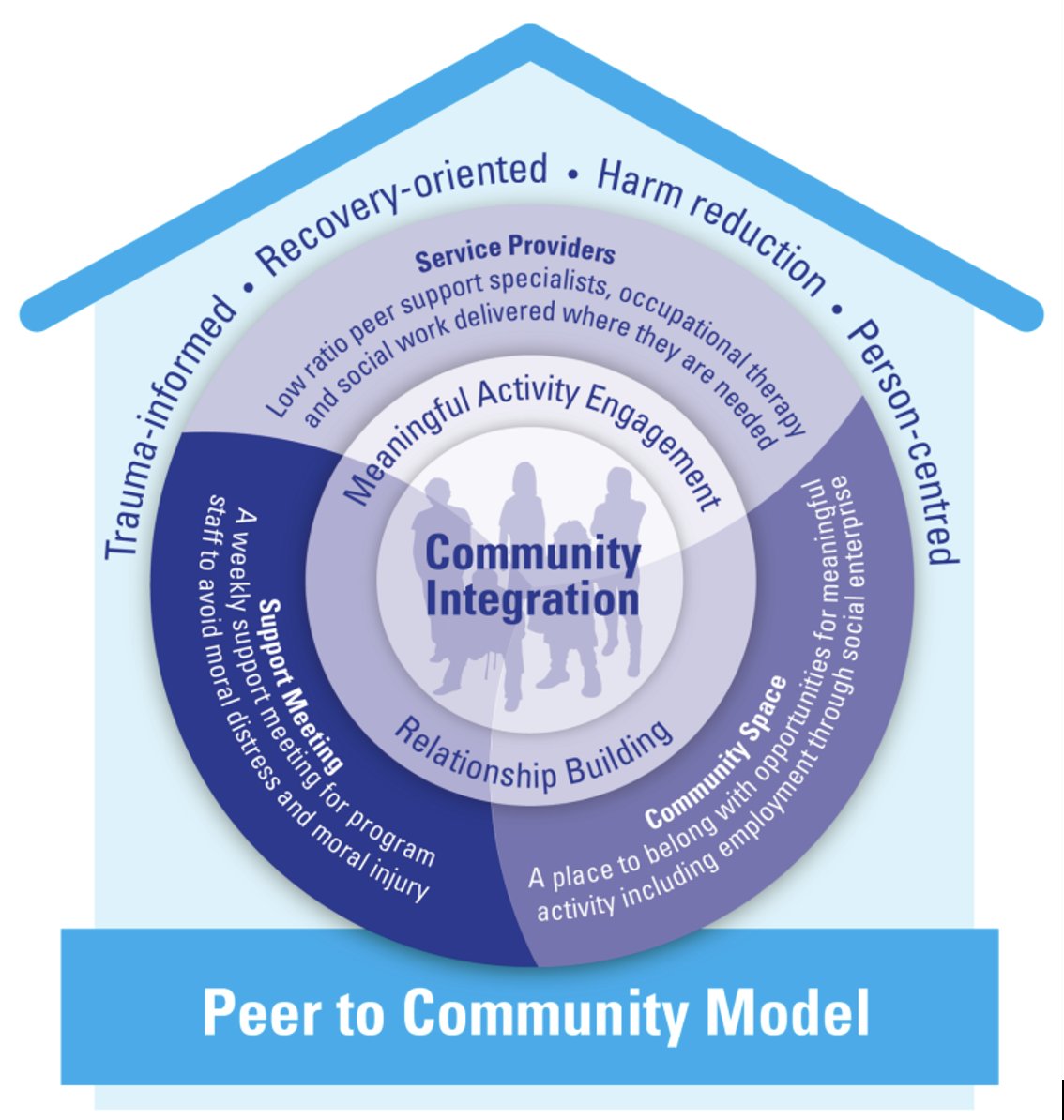Amid a housing and homelessness crisis across Canada, we often lose sight of the needs of individuals beyond the security of housing. A range of studies show that Housing First is more effective than the traditional ‘staircase model,’ which requires individuals to progress through shelters and transitional housing before being deemed ‘housing ready.’ While Housing First is exactly what we need to implement in communities across Canada, like any intervention, it is not a panacea for all of the challenges faced by persons who are leaving homelessness. Studies consistently illustrate that while Housing First effectively secures housing, it does not significantly improve other key areas of well-being—such as employment, income, mental health symptoms, substance use, and importantly, community integration. Community integration is a particularly important outcome as it has the potential to increase resilience to future homelessness by providing social supports that help a person avoid homelessness when they find themselves at risk of tenancy loss. These findings indicate that while there is a need to continue to implement Housing First across Canada, there is also a need to provide additional supports to more effectively target these key outcomes.
The Peer-to-Community (P2C) Model
With knowledge of this literature, in collaboration with a community advisory board (CAB) involving persons with lived experiences of homelessness, service providers and researchers, I initiated a Canadian Institutes of Health Research (CIHR)-funded community-based participatory research (CBPR) study from 2019-2021 designed to identify the conditions needed to thrive following homelessness in Kingston and London, Ontario, Canada. Our findings were distributed throughout the Kingston and London communities in the form of two reports (Kingston; London) and multiple presentations to which members of the broad community were invited. We then invited our CAB and members of the broad community to engage in a co-design process to identify an approach that would respond to our findings. The CAB determined the need for a model of support for promoting community integration following homelessness, as they recognized this as a critical gap in their communities.
Our co-design efforts resulted in the development of the Peer to Community (P2C) model, an intervention using peer support specialists, supported by an occupational therapist and a social worker, to deliver services designed to help individuals build social networks and find belonging in their communities following homelessness. The P2C model offers multiple components, including a dedicated community space for social enterprise opportunities and individualized programming co-developed with participants. See a visual representation of the P2C model in Figure 1.

Figure 1. Components of the P2C Model
In 2022, our team was provided with funding by CIHR to pilot the P2C model in Kingston, Ontario, Canada. Our pilot program operated from May 2022 to August 2024. At present, our team is analyzing our findings from this research and we are in the early stages of using our findings to refine the P2C model to inform future implementation efforts.
It is widely acknowledged that individuals who experience homelessness face significant social exclusion, and this exclusion is likely to contribute to further marginalization that makes securing and sustaining housing in the long term even more challenging. Community integration is a key outcome of services designed to prevent homelessness, and models that promote this outcome are sorely needed in our communities to build on the success of Housing First. The P2C model is one such approach, aiming to build on the knowledge and strengths of persons who experience homelessness to enhance psychosocial well-being and resilience to ongoing homelessness in the future.
Read the full article here: https://ojs.lib.uwo.ca/index.php/ijoh/article/view/17806
